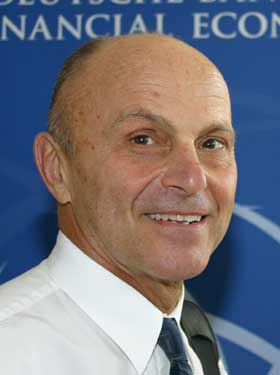 Surgeon, author and Macarthur Fellow Atul Gawande posted his commencement address to this year’s graduating class at Williams College. In the talk, Gawande cites recent research examining why some surgical hospitals have much lower death rates than others. It turns out that these exceptional hospitals don’t actually have fewer cases of things going wrong, but rather:
Surgeon, author and Macarthur Fellow Atul Gawande posted his commencement address to this year’s graduating class at Williams College. In the talk, Gawande cites recent research examining why some surgical hospitals have much lower death rates than others. It turns out that these exceptional hospitals don’t actually have fewer cases of things going wrong, but rather:
what they proved to be really great at was rescuing people when they had a complication, preventing failures from becoming a catastrophe…
We talk a lot about “risk management”—a nice hygienic phrase. But in the end, risk is necessary. Things can and will go wrong. Yet some have a better capacity to prepare for the possibility, to limit the damage, and to sometimes even retrieve success from failure.
When things go wrong, there seem to be three main pitfalls to avoid, three ways to fail to rescue. You could choose a wrong plan, an inadequate plan, or no plan at all. Say you’re cooking and you inadvertently set a grease pan on fire. Throwing gasoline on the fire would be a completely wrong plan. Trying to blow the fire out would be inadequate. And ignoring it—“Fire? What fire?”—would be no plan at all.
It seems to me that this is directly applicable to investing, in two ways.
At times like these, when the market swoons and investors see big drops in their portfolio values, many scramble and do the equivalent of gasoline on the grease fire: panic selling. But big pullbacks like we’ve experienced over the past month are simply part of the reality of investing in the stock market. The minute you decide to invest in stocks, you should have some kind of plan for what you’ll do when things move against you, as it’s merely a matter of time until they do.
One perfectly legitimate plan is to do nothing. That’s not ignoring a downturn – it’s consciously enduring the unfortunate loss of paper value, which you should have known would happen at some point. Another approach is to buy more at times like this, or at least continue with regular investing with the confidence that you’re buying at a discount to prices just a month ago. See this downturn in the context of the long term performance of stocks. And some managers like Roger Nusbaum begin applying defensive hedges.
But, in truth, Gawande isn’t really referring to this situation. He’s referring to events that prove your entire working plan has been wrong:
recognizing that your expectations are proving wrong—accepting that you need a new plan—is commonly the hardest thing to do. We have this problem called confidence. To take a risk, you must have confidence in yourself. In surgery, you learn early how essential that is. You are imperfect. Your knowledge is never complete. The science is never certain. Your skills are never infallible. Yet you must act. You cannot let yourself become paralyzed by fear.
Yet you cannot blind yourself to failure, either. Indeed, you must prepare for it. For, strangely enough, only then is success possible.
Investing, of course, also always involves risk and acting despite imperfect knowledge. At some point, you can experience a shock that’s not merely a predictable loss in value, but rather a clear sign that the whole way you’re investing is wrong – or at least, wrong for you. Did you take on too much risk than you really can bear, and get badly whacked (many experienced that type of wakeup call from the 2001-2 crash, or the 2008 version)? Or did you stay fully in cash – for waaay too long?
Having the humility to reassess your plan – rescuing it from failing to meet your needs – is a key part of so many life projects, including investing.




